David López-Pérez
Cellular Network Design for UAV Corridors via Data-driven High-dimensional Bayesian Optimization
Apr 07, 2025Abstract:We address the challenge of designing cellular networks for uncrewed aerial vehicles (UAVs) corridors through a novel data-driven approach. We assess multiple state-of-the-art high-dimensional Bayesian optimization (HD-BO) techniques to jointly optimize the cell antenna tilts and half-power beamwidth (HPBW). We find that some of these approaches achieve over 20dB gains in median SINR along UAV corridors, with negligible degradation to ground user performance. Furthermore, we explore the HD-BO's capabilities in terms of model generalization via transfer learning, where data from a previously observed scenario source is leveraged to predict the optimal solution for a new scenario target. We provide examples of scenarios where such transfer learning is successful and others where it fails. Moreover, we demonstrate that HD-BO enables multi-objective optimization, identifying optimal design trade-offs between data rates on the ground versus UAV coverage reliability. We observe that aiming to provide UAV coverage across the entire sky can lower the rates for ground users compared to setups specifically optimized for UAV corridors. Finally, we validate our approach through a case study in a real-world cellular network, where HD-BO identifies optimal and non-obvious antenna configurations that result in more than double the rates along 3D UAV corridors with negligible ground performance loss.
Capacity and Power Consumption of Multi-Layer 6G Networks Using the Upper Mid-Band
Nov 14, 2024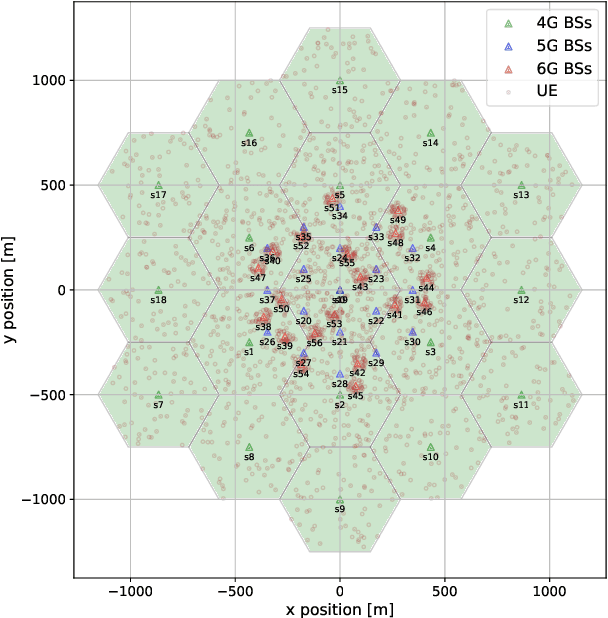
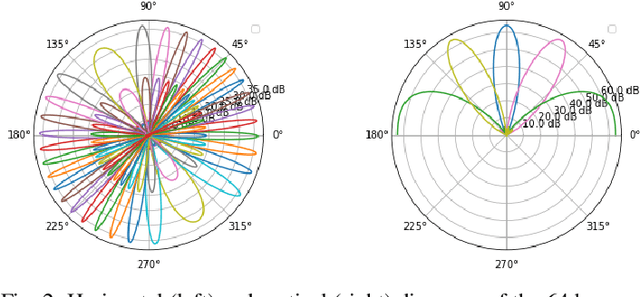
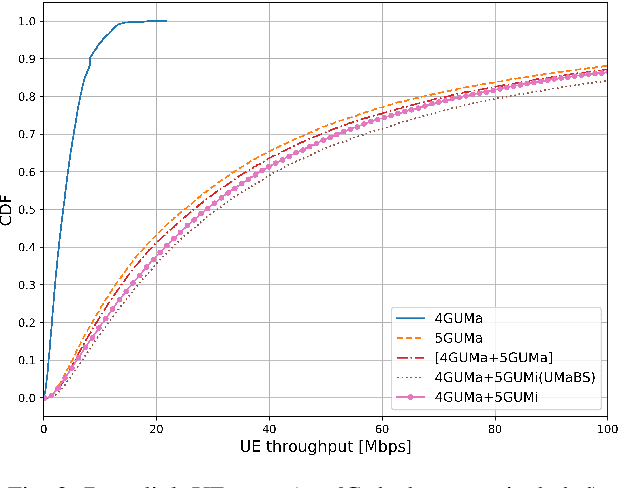
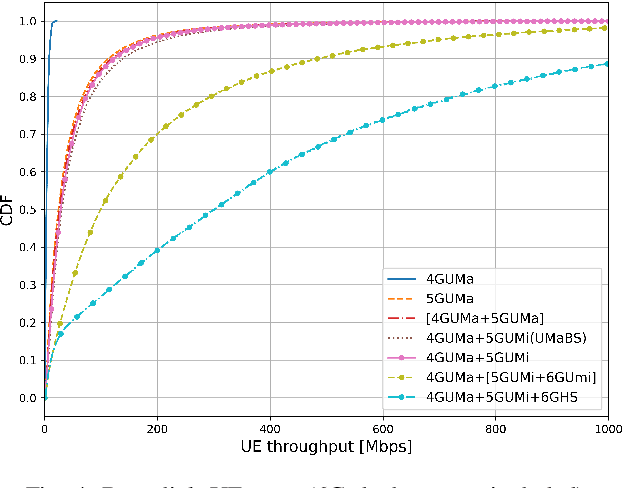
Abstract:This paper presents a new system model to evaluate the capacity and power consumption of multi-layer 6G networks utilising the upper mid-band (FR3). The model captures heterogeneous 4G, 5G, and 6G deployments, analyzing their performance under different deployment strategies. Our results show that strategic 6G deployments, non-co-located with existing 5G sites, significantly enhance throughput, with median and peak user rates of 300 Mbps and exceeding 1 Gbps, respectively. We also emphasize the importance of priority-based cell reselection and beam configuration to fully leverage 6G capabilities. While 6G implementation increases power consumption by 33%, non-colocated deployments strike a balance between performance and power consumption.
Rethinking Dense Cells for Integrated Sensing and Communications: A Stochastic Geometric View
Dec 25, 2022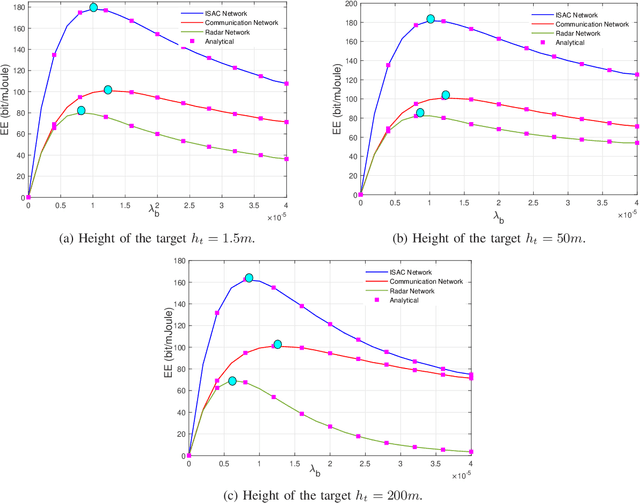
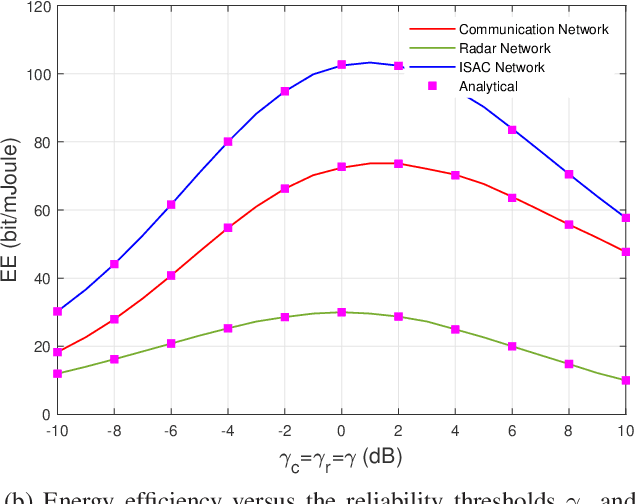
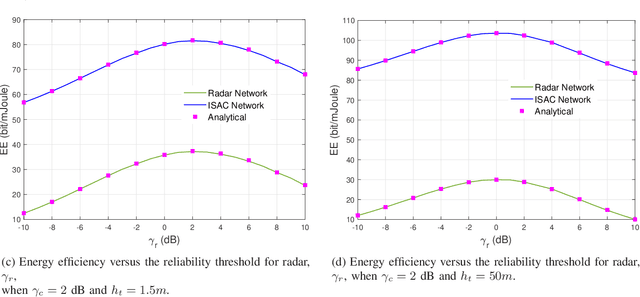
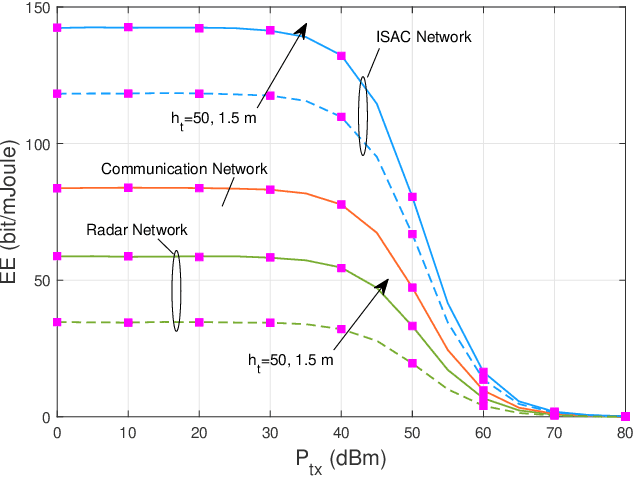
Abstract:The inclusion of the sensing functionality in the coming generations of cellular networks, necessitates a rethink of dense cell deployments. In this paper, we analyze and optimize dense cell topologies for dual-functional radar-communication (DFRC) cellular networks. With the aid of tools from stochastic geometry, we derive new analytical expressions of the potential spectral efficiencies in (bit/sec/m^{2}) of radar and communication systems. Based on the new formulations of the potential spectral efficiencies, the energy efficiency (bit/Joule) of DFRC systems is provided in a tractable closed-form formula. Then, an optimization problem to obtain the optimal base station (BS) density that maximizes the network-level energy efficiency is formulated and investigated. In this regard, the mathematical expression of the energy efficiency is shown to be a uni-modal and concave function in the density of the BSs. Therefore, optimal density of the BSs that maximizes the energy efficiency can be obtained. Our analytical and numerical results demonstrate that the inclusion of the sensing functionality clearly differentiates the optimal BS topologies for the DFRC systems against classical communication-only systems.
 Add to Chrome
Add to Chrome Add to Firefox
Add to Firefox Add to Edge
Add to Edge